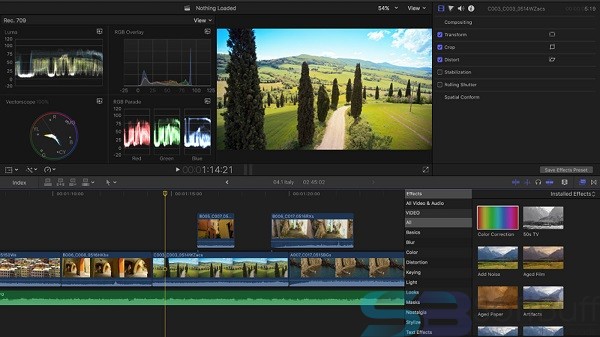

FINAL CUT PRO 10 TUTORIAL ARCHIVE
Instead of importing media off camera-cards straight into a library, you also have the option to have Final Cut Pro X create a camera archive by selecting a camera card that is connected to the Mac and clicking the Create Archive… button in the lower left of the import window.įinal Cut Pro X now creates a so-called bundle file, which is basically a folder that behaves like a single file but has all the files in it. If the optimized media has already been created you can select the Event (that has the media in it) in the browser and go to Menu/File/Delete generated Event Files tick Delete optimized Media and click OK to delete the ProRes representations of the clips inside that Event.

You can stop that transcoding, if your machine is capable of coping well with the original camera media, by clicking the circle-icon in the top-left of the Background Tasks window ( cmd+9 to reveal) and stop the creating of optimized media there.
FINAL CUT PRO 10 TUTORIAL UPDATE
If you have more info on that, please let me know and I’ll update the post accordingly.
FINAL CUT PRO 10 TUTORIAL MP4
That means it’s transcoding the mp4 to ProRes, thus increasing the storage requirements significantly! I’m not sure why Final Cut Pro X is doing that for specific files, rumor has it that it has to do with spanned clips those cameras produce. Some camera formats - I have encountered this for example with video from the Fujifilm XT-2 camera - are imported (copied) into Final Cut Pro X’s current media location without rewrapping, but in the background Final Cut Pro X starts to automatically create Optimized Media. This is an important fact to keep in mind! During this process, video is not re-encoded or altered, thus not degraded in quality. Rewrapping means Final Cut Pro X strips the mpg4 encoded video out of the MXF container file and puts it into a new QuickTime container. If you are importing from a card it will rewrap. mxf file FinalCutProX will not rewrap it. NOTE: Final Cut Pro X can import most MXF files directly for a while now. mxf files those cameras write to their cards 1:1, Final Cut Pro X rewraps them to. Some file-formats like mpg4 from some Canon DSLRs are copied over as they are, but a lot of formats like Sony’s SxS or XQD cards or Canon’s XF-format are treated differently by Final Cut Pro X. While this is true it does not always make an exact duplicate of the files on the card. I have already explained in the first part of this tutorial that Final Cut Pro X will copy media off the camera-cards into its own storage location. In the first part I have covered the basics, now it’s time for some more nitty-gritty. This is the second part of my series about working with camera cards in Apples Final Cut Pro X. By Florian Gintenreiter January 18 th, 2019


 0 kommentar(er)
0 kommentar(er)
